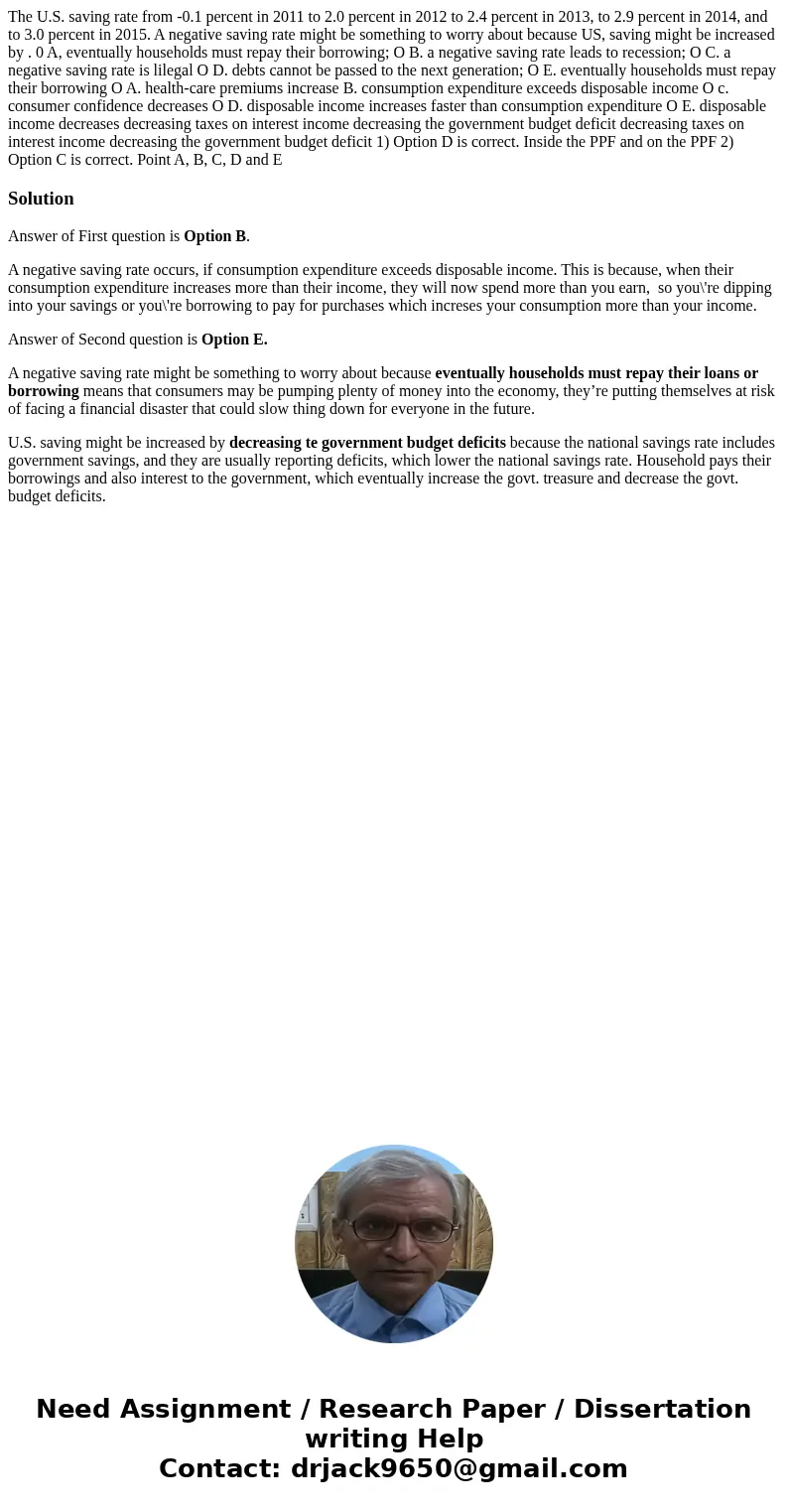The US saving rate from 01 percent in 2011 to 20 percent in
Solution
Answer of First question is Option B.
A negative saving rate occurs, if consumption expenditure exceeds disposable income. This is because, when their consumption expenditure increases more than their income, they will now spend more than you earn, so you\'re dipping into your savings or you\'re borrowing to pay for purchases which increses your consumption more than your income.
Answer of Second question is Option E.
A negative saving rate might be something to worry about because eventually households must repay their loans or borrowing means that consumers may be pumping plenty of money into the economy, they’re putting themselves at risk of facing a financial disaster that could slow thing down for everyone in the future.
U.S. saving might be increased by decreasing te government budget deficits because the national savings rate includes government savings, and they are usually reporting deficits, which lower the national savings rate. Household pays their borrowings and also interest to the government, which eventually increase the govt. treasure and decrease the govt. budget deficits.

 Homework Sourse
Homework Sourse